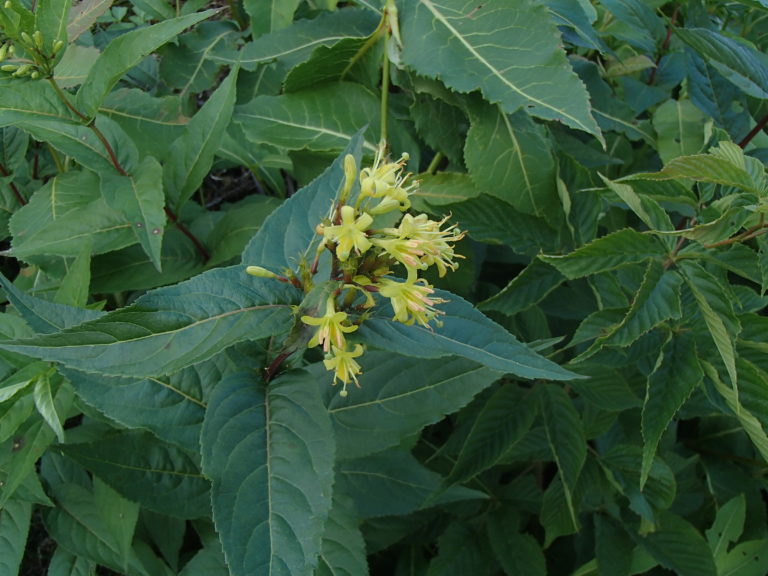This plant is not currently for sale. This is an archive page preserved for informational use.
Southern Bush Honeysuckle is a low-growing (3′-5′) deciduous shrub native to the Southern Appalachians and Great Smokey Mountains. Its arching stems are square in outline, its leaves opposite, lustrous, medium green, and lance-shaped, with serrated margins. Although it shows only so-so fall coloration, it has other valuable traits: It is attractive for its clean foliage and its sweet, yellow blooms in high summer. It is rhizomatous, fast-growing and very tough. It can take both very cold and hot/dry/sunny conditions in stride as well as a wide range of soil pH. Thus it is an ideal groundcover for difficult locations such as stabilizing a steep, sunny bank, attracting butterflies and hummingbirds and bees and providing cover for small animals and birds.

